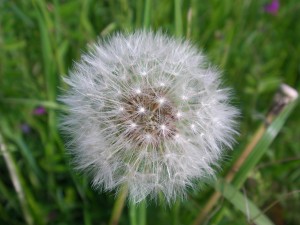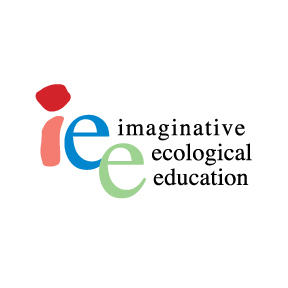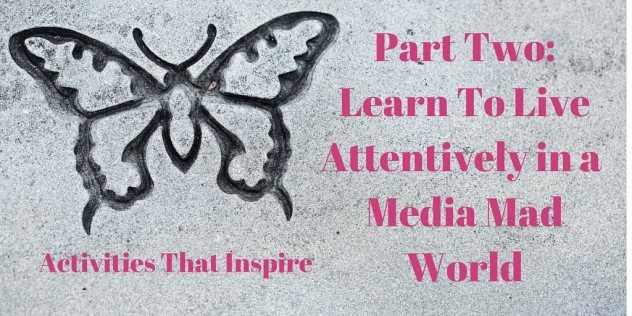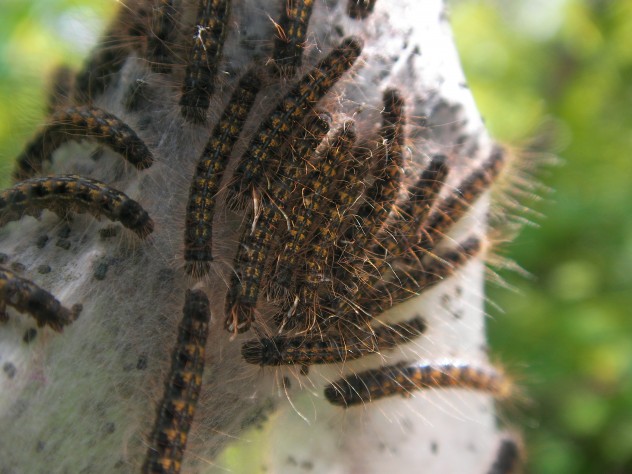Just google it.
Want to find out something new? What to research something old? Just google it. Everybody “googles” because it is a very quick and very handy means to access information. “Googling” is such a basic and widespread activity these days, that it has entered our vernacular.
I am ambivalent when it comes to googling; I appreciate its convenience and I appreciate the wondrous advancement it represents, but it leaves me uneasy.
Googling isn’t learning. Simply accessing information doesn’t make it meaningful. I’ve also got a sense that people believe that what they learn through reading on-line or through some other form of media gives them a “complete” understanding of something. The activities in this Imaginative Ecological Education series aim to give students some skills for engaging with the richness of the immediate world of which they are part.
Google can’t help with that.
Let’s be clear. I am not suggesting that technology is bad; this couldn’t be farther from the truth. I do enjoy this blogging business! What I am suggesting is that on-line learning (like any “mode” of learning) has its limits. I fear the cost associated with emphasizing technology in schools in conjunction with the often “manic” way one is required to live in a world of beeps, alarms, alerts and notifications.
Without expanding our pedagogical practices to include more embodied learning activities, we are not be providing our children/students with a well-rounded education.
We need to teach them how to engage with the world more completely.
We need to provide them with the skills to enable them to understand the complexity and richness of the wonder-full world in which they are immersed. (Read rationale for these lessons on living attentive in Part One in this series.)
Use the following activities to help your children or your students (or yourself) learn to live attentively* in a “media mad” world. Help them to develop the skills to increase their awareness, focus on the present moment, and expand their understanding. Without providing such balance—or, at least attempting to do so—we are doing them a disservice; they may believe that knowing the world through media is complete. They may be completely unaware of what they are missing in the world around them.
All the suggested activities involve practicing skills that focus on the now. They develop the Imaginative Ecological Education principle of Activeness by engaging a whole range of the body’s tools for more fully acknowledging and experiencing the world. They are open-ended and allow you to make any number of different curricular connections. I hope you find them useful in silencing the distractions and re-focusing your attention on the wonder-ful world of which we are part.
Find 2 detailed activities in Part One of the series here.
Activity #3: Slow It Down & Take Off The Blinders
“Everything around us is imbued with the deep mystery and beauty of the unknown whether we pay attention to it or not. Understanding the context in which a part of life emerges can help to spark a sense of wonder within us.” (Horowitz, 2013, p.106)
Overview: The premise of this activity is that there is always more than meets the eye. Far too often we see the world as ordinary—it is familiar and we often take-it-for granted. In this activity, we will cultivate curiosity so that the familiar can appear strange to students. The aim is to become more curious and, in this way, to see the wonder in things—to see how each thing or process around us is unique in some way. The activity culminates in a “20 minute challenge” for students.
Read on!
Introductory questions for discussion: When you go for a walk, what do you see? Do you see all there is to see? Most of what there is to see? Discuss. Explain to students that they actually miss most of what is going on around them. You can use the analogy of taking a test and receiving either a very high or low score. Ask students: Is 99% on a test a good score? Getting 99% right would be something to be proud of wouldn’t it? What if you got 99% wrong? That is to say, what if you missed 99%? Not so good. The bad news is, of course, that if life was a “test” we miss 99% of it; the better news is that this is normal.
A normal feature of being human is that we tend to ignore most of the mass of activity around us. Like horses wearing blinders, we do not want to get distracted. Depending on your students, you might spark further discussion or questions with the following quote: “We see, but we do not see; we use our eyes, but our gaze is glancing, frivolously considering its object. We see the signs, but not their meanings. We are not blinded, but we have blinders” (Horowitz, 2013, pp. 8-9). What does that mean? Can students give examples of how this is true?
The learning challenge requires students to remove their blinders and broaden their perceptual field.
The Challenge
The challenge is to walk 20 feet in 20 minutes. When was the last time you (yes, you, teacher!) took 20 minutes to walk 20 feet? Well, maybe when you were 3 years old OR if you were in the presence of a 2-3 year old. When we are 2 it can easily take 20 minutes to walk 20 feet. We are captivated by the world around us and stop at each instant as the wonder of the world around us engages us.
Here’s the link to Dr. John Medina’s brain research series called “Brain Rules”—the #1 rule being the great importance of CURIOSITY for intellectual development. If you watch from 2 mins and 10 seconds in you will hear about the 20 feet in 20 minutes challenge. No need to share with students, but an interesting discussion!:
https://www.youtube.com/watch?v=NU6OJCW-tyw (2:10 into the video)
I recommend you have your students do this ALONE to avoid distractions. Given them 20 minutes to walk 20 feet. They should not finish their 20 feet walk before 20 mins is up. They are required to take note of absolutely all the things they can as they walk. They musn’t proceed if they haven’t investigated all there is to see. Plant the seed that there is always more than meets the eye. For everything they notice they can ask many questions. For example: What has happened here? What evidence is there of growth here? Where has this object been? Who created it? Where did it come from? Who put it here? How did it get here? What would I do without it? And many more questions.
For an additional activity focusing on cultivating curiosity I encourage you to read this post. Sure, that post was originally shared for March 2 (“Old Stuff Day”) but any day provides us an opportunity to evoke curiosity and wonder.
Final Comments
It is important—and possible—to cultivate TIME in learning to nurture student inquiry and imagination. That’s the message this activity aims to leave you with: In learning we are often pressed to move to the next thing—what can we do to cultivate time in learning to support inquiry and curiosity? Learning in Depth is one project I will post about soon—a project Emma Kidd endorses as the practice required to live attentively, know deeply, and experience knowledge on a deeper level.
Sources Of Inspiration—Old & New Favourites
Abram, D. (1996). The spell of the sensuous: Perception and language in a more-than-human world (1st ed.). New York: Pantheon Books.
Horowitz, A. (2013). On looking: Eleven walks with expert eyes. New York: Scribner.
*Kidd, E. (2015). First steps to seeing: A path towards living attentively. (Edinburgh: Floris Books).



This is a great post! “Googling isn’t learning. Simply accessing information doesn’t make it meaningful. ” – well said. I couldn’t agree more. My 1.5 year old has taken me on the 20 min walk! Shes great at it of course! Its refreshing for me also to spark curiosity and wonder about all the things around us all the time. Thanks!
Hi Mimi. I would go further to say that googling can actually take something “out” of us–sooooo, more reason to balance out with more attentive ways of living and learning. I am sure you loved the walk!
Gillian, this post really hit home for me. It’s something I’ve been struggling with in my own learning. I used to take time to read educational books that were in depth and took time to digest. Now everything is so fast and frenzied that I don’t really take the time to immerse myself in deeper learning and reflecting. I love these walking activities that are designed to help kids engage with the world around them and I plan to try some of them myself. I think I also need to take the time to slow down and marvel at the world.